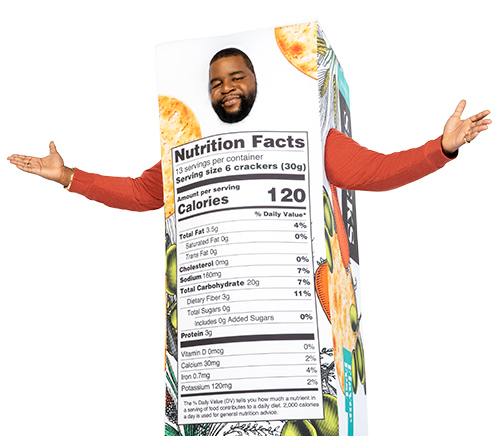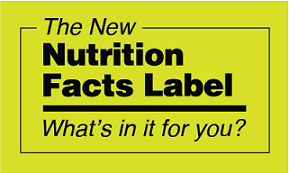Serving Size on the New Nutrition Facts Label
The Nutrition Facts label on packaged foods and drinks has been updated to make it easier for you to make informed choices.
Read on to find out what’s new with Serving Size.
Serving Size | Calories | Percent Daily Value | Added Sugars
Start with Serving Information
First, look at the serving size and the number of servings per container, which are at the top of the label. The serving size is shown as a common household measure that is appropriate to the food (such as cup, tablespoon, piece, slice, or jar), followed by the metric amount in grams (g).
The nutrition information listed on the Nutrition Facts label is usually based on one serving of the food; however, some containers may also have information displayed per package.
Understand Serving Sizes
Some serving sizes have changed on the new Nutrition Facts label. By law, serving sizes must be based on the amount of food people typically consume, rather than how much they should consume. Serving sizes have been updated to reflect the amount people typically eat and drink today. For example, based on the review of relevant information such as nationwide surveys of the amounts of foods Americans eat, the serving size for soda has changed from 8 ounces to 12 ounces. Visit Understanding Serving Sizes to learn more.
Here are a few other things about serving sizes to keep in mind:
- The serving size is not a recommendation of how much to eat or drink.
- One package of food may contain more than one serving.
- Some containers may also have a label with two columns—one column listing the amount of calories and nutrients in one serving and the other column listing this information for the entire package. Packages with “dual-column” labels let you know how many calories and nutrients you are getting if you eat or drink the entire package at one time.
Putting Serving Sizes Into Action
In the example below, one serving of lasagna is one cup. If you ate two cups, you would be consuming two servings and two times the calories and nutrients shown on the Nutrition Facts label. Pay attention to the serving size, especially how many servings there are in the food package. Then you might ask yourself, “How many servings am I eating or drinking?”
|
Example |
||||
|---|---|---|---|---|
|
One Serving |
%DV |
Two Serving |
%DV |
|
| Serving Size | 1 cup (227g) | - | 2 cups (454g) | - |
| Calories | 280 | - | 560 | - |
| Total Fat | 9g | 12% | 18g | 24% |
| Saturated Fat | 4.5g | 23% | 9g | 46% |
| Trans Fat | 0g | - | 0g | - |
| Cholesterol | 35mg | 12% | 70mg | 24% |
| Sodium | 850mg | 37% | 1700mg | 74% |
| Total Carbohydrate | 34g | 12% | 68g | 24% |
| Dietary Fiber | 4g | 14% | 8g | 29% |
| Total Sugars | 6g | - | 12g | - |
| Added Sugars | 0g | 0% | 0g | 0% |
| Protein | 15g | - | 30g | - |
| Vitamin D | 0mcg | 0% | 0mcg | 0% |
| Calcium | 320mg | 25% | 640mg | 50% |
| Iron | 1.6mg | 8% | 3.2mg | 20% |
| Potassium | 510mg | 10% | 1020mg | 20% |
Learn More:




